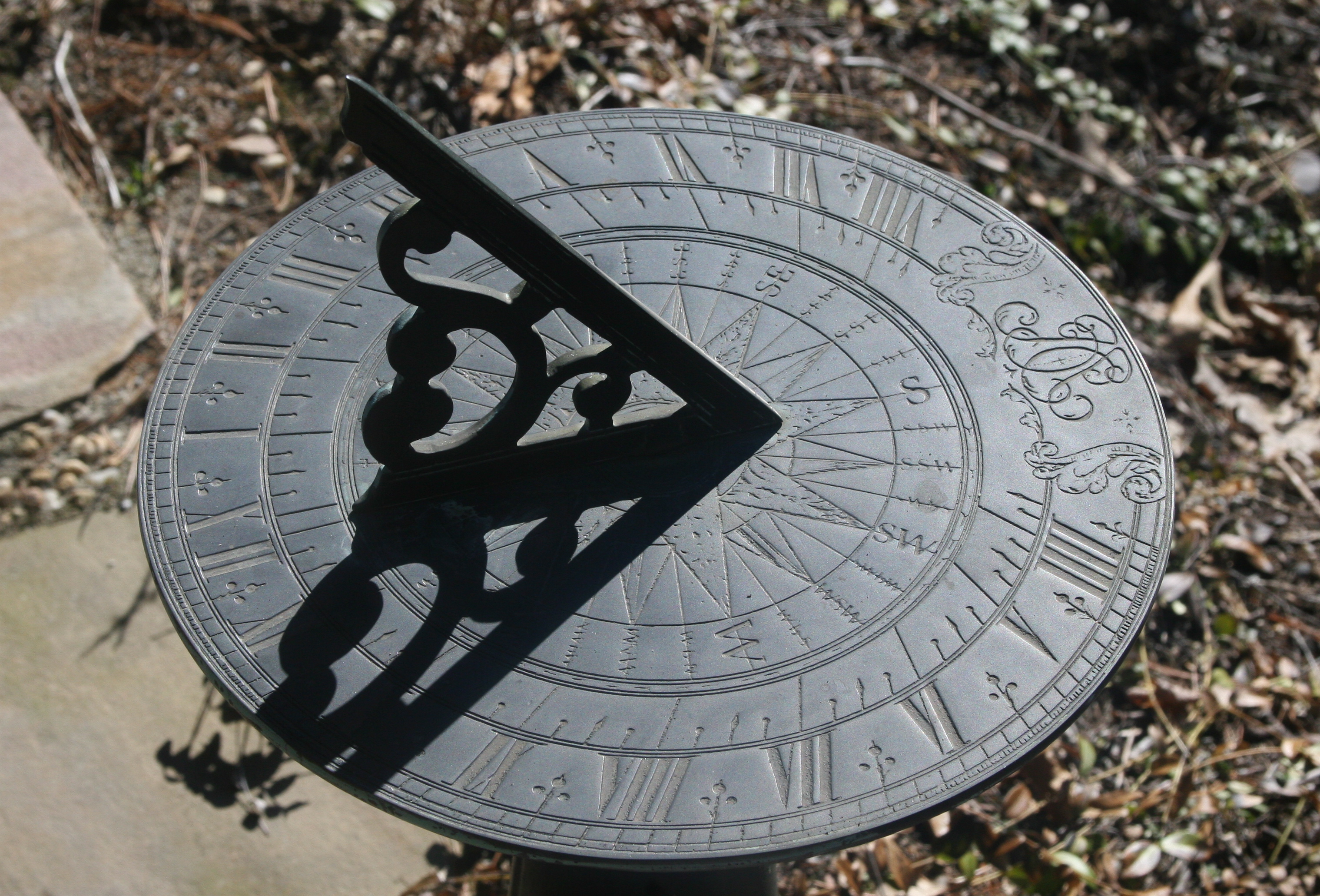Remember that hex in the Dreadwood where the party shrinks down to a fraction of their size? This is like that, but with two differences:
It’s in the Firelands.
It messes with time instead of space.
 |
| Sundial photo by liz west / CC BY |
History
This is probably a backlash from the shattering of Saintess Delicia’s time sphere. When the sphere shattered and created the “temporal bubble” that saved Crowfield, it also caused a few other hexes in the region to suffer temporal anomalies.
The Slow Hex
In a slow hex, time passes at 1/24th the normal rate. In other words for every hour that passes in hex, a day passes outside of the hex. A party entering the hex would think that the sun suddenly started racing through the sky.
If we assume that the Firelands are fairly equatorial with day and night evenly divided at 12 hours each, then within the hex every hour has 30 minutes of daylight and 30 minutes of night. Unless the party is willing to travel in the darkness of night, that means their rate of travel will be cut in half. Instead of taking two hours to cross the hex, it will take four hours. When they emerge from the hex, it will be four days later.
The Fast Hex
On the flip side, in a fast hex, time passes at 24× the normal rate. In other words for every day that passes in hex, only an hour passes outside of the hex.
For a single hex, the effects are much more subtle than the slow hex. For the two hours that a party spends crossing a fast hex, only five minutes will have passed in the outside world. They probably wouldn’t even notice that the sun dramatically slowed, unless they happened to enter the hex near sunset.
To be effective to puzzle the party, the fast hex probably needs to be a bigger region. Though maybe a single hex would be a different sort of puzzle. Would they even notice?
If they do figure it out, a fast hex is a great place to to rest and heal without losing much time in the outside world.
Wrapping it Up
That’s it for this week. Between the two, I think the slow hex will be more interesting in a single session, but a fast hex would be more interesting long term. It would be interesting to have a much larger “fast hex region” somewhere to the east of the current map.
Any thoughts? Did I miss anything? Are there other benefits/pitfalls that I didn’t cover?
Oh, I like it! Subtle environmental puzzles to keep the travel interesting.
ReplyDeleteTo compare it to the shrinking Dreadwood hex, this seems like it would need to be an abrupt transition (as opposed to the size-based gradual shift). Would there be any risk of someone suddenly aging one side of their body but not the other if the happened to paused at the border of the hexes?
And is there any impact on momentum? i.e. if someone loosed an arrow from inside a fast hex, if it's perceived speed was 24cm/s, then it's actually speed is 1cm/s - meaning if you shot from in the hex out, then it would seem to almost magically crawl to a stop.
And in terms of movement, would the players be considered to be expending 24x as much energy since they are moving faster?
Or is the effect more of a bubble thing, where the local expenditure is as perceived but the relation to the outside world is the slow/fast component?